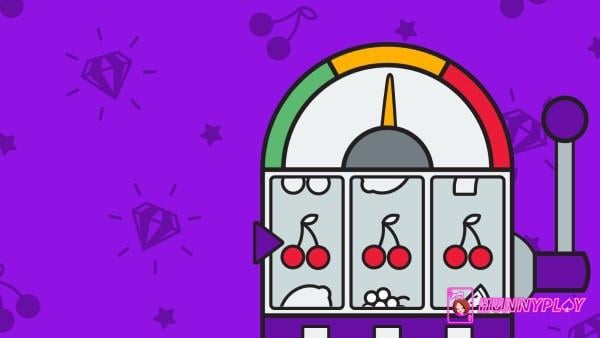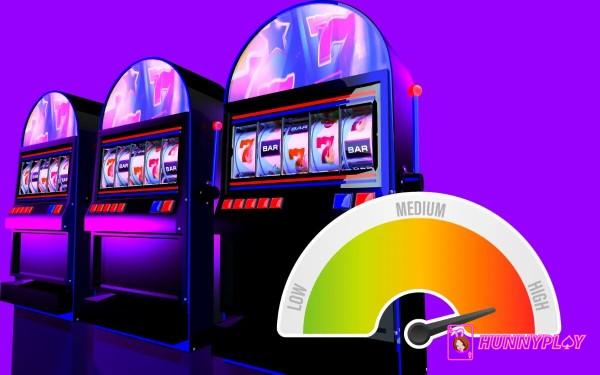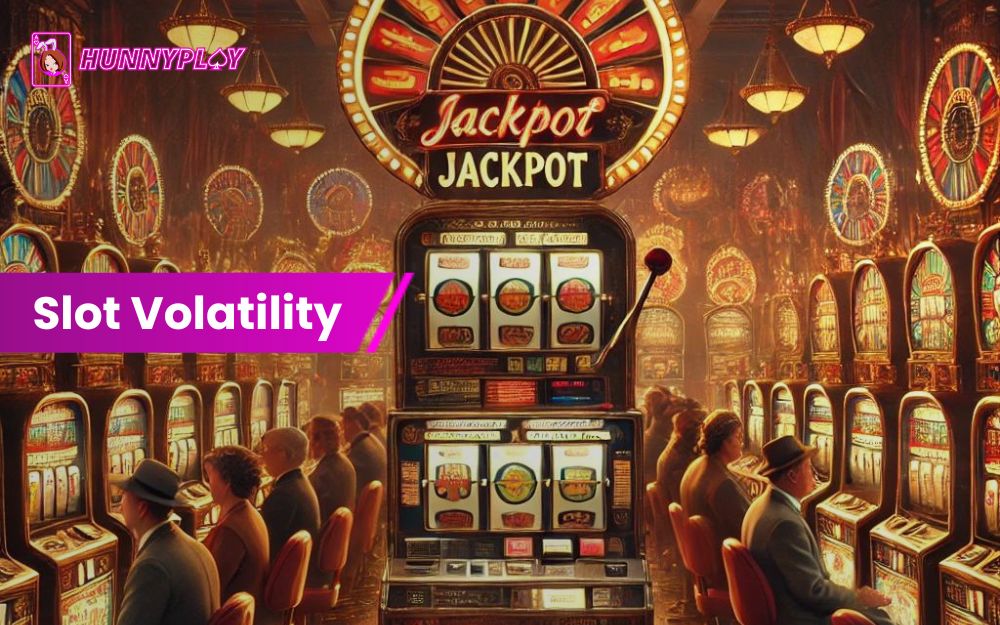Slot volatility is crucial in mastering your game choices. It dictates how often and how much a slot pays out, shaping your experience. Whether you’re after big wins or steady payouts, understanding this key factor will guide you to the perfect slot. HunnyPlay will help you to dive in to learn how it influences your gameplay.
What does slot volatility mean in slots gaming?
When it comes to slots, volatility refers to the frequency and size of payouts. Essentially, it measures the risk level by indicating how often and how much you win or lose.
Slot games are classified into high, medium, or low volatility, each offering distinct advantages. The ideal choice depends on your personal preference, as we’ll explore further.
Before diving into specifics, remember that volatility isn’t the sole factor affecting a slot’s payout potential. You should also consider:
- Return to Player (RTP) percentage
- Betting limits
- Prize structure
These elements collectively determine the overall potential of a slot game.
It’s also crucial to understand that volatility, like RTP, is theoretical. This rating is based on statistical averages from thousands of spins, providing an overarching measure rather than a guarantee of outcomes in any given session.
For instance, you might experience 50 spins without a win on a low volatility slot or hit 10 wins in 30 spins on a high volatility slot. In a single session, anything can happen, but over time, your results will align with the slot’s volatility level.

Slot volatility measures the risk level by indicating the frequency and size of payouts. (Source: Internet)
Slot volatility hierarchy
High slot volatility
What does it mean when a slot is rated as “high volatility”? In essence, a high slot volatility offers lower payout frequencies, meaning wins are less frequent compared to medium and low volatility slots.
However, the trade-off is that when you do win, the payouts are typically larger, often exceeding your original bet. This makes high volatility slots appealing to players who are willing to take on more risk for the chance of bigger rewards.
Some of the most popular high volatility slots include:
- Big Bass Splash
- Bonanza
- Gold Blitz
- Book of Dead
- Fluffy Favorites
These games are favored by those who enjoy the thrill of chasing substantial wins, even if it means enduring longer dry spells.
Medium slot volatility
Medium slot volatility slots strike a balance between high and low volatility games, offering a mix of both risk and reward.
These slots are designed to provide a steady flow of medium-sized payouts, appealing to players who enjoy a bit of anticipation but prefer not to wait too long for their wins.
Developers often create medium volatility slots to cater to the majority of players who seek an even balance between risk and potential rewards. These games provide an engaging experience with the excitement of frequent, yet moderate, payouts.
It’s important to remember that volatility is based on statistical averages, so while medium volatility slots generally offer regular mid-sized payouts, there are no guarantees.
Slots in this category may also be classified as “medium-low” or “medium-high,” offering slight variations in risk and reward.
Some of the most popular medium volatility slots include:
- Fishin’ Frenzy The Big Catch
- 9 Pots of Gold
- Eye of Horus
- Rainbow Riches
- Magic Jokers
These games are well-loved for their balanced gameplay, making them a popular choice among players who want a mix of excitement and steady returns.
Low slot volatility
What does “low volatility” mean in slot gaming? Simply put, a low volatility slot offers frequent payouts, making it ideal for players who prefer steady, consistent wins.
However, these payouts are generally smaller compared to those in higher volatility slots.
For instance, a low volatility slot might pay out 70% of the time, with an average prize worth 60% of your bet. So, if you wager £1, you might typically win £0.60.
In contrast, a high slot volatility may pay out 40% of the time, but the average prize could be 200% of your bet, meaning a £1 wager could yield a £2 win.
Low volatility slots appeal to those who enjoy regular wins and extended gameplay without taking on much risk.
Some of the most popular low volatility slots include:
- Starburst
- Age of the Gods: God of Storms
- Clover Rollover 2
- Fishin’ Frenzy Jackpot King
- Agent Jane Blonde Returns
These games are favorites among players who value consistency and prefer a more relaxed gaming experience, with the reassurance of frequent, albeit smaller, payouts.

Understanding the slot volatility hierarchy helps you choose games that best align with your risk tolerance and winning strategy. (Source: Internet)
Choosing the ideal slot volatility for your play style
Understanding slot volatility helps you determine how often and how much a slot machine might pay out.
High slot volatility often requires more patience and a larger bankroll, as wins are less frequent but can be significantly larger when they occur. This approach involves more risk but also the potential for substantial rewards.
On the other hand, low volatility slots offer more frequent payouts with smaller prizes, making them a safer, low-risk option for players who prefer steady wins over big jackpots.
To choose the right volatility for your playing style, ask yourself these key questions:
- Do I prefer a high-risk, high-reward strategy?
- Or do I favor a low-risk, low-reward approach?
While it’s possible to win big on low volatility slots and land small prizes on high volatility games, your strategy should align with the game’s payout potential.
High slot volatility carries more financial risk but offers the allure of larger rewards. Conversely, low volatility slots are less risky, with smaller but more consistent payouts.
Your decision should be based on your risk tolerance and whether you seek the thrill of high-stakes gameplay or the reliability of frequent wins.

Selecting the right slot volatility ensures your gameplay aligns perfectly with your risk appetite and desired rewards. (Source: Internet)
How does volatility affect slot payouts?
The impact of slot volatility on payouts might not be immediately apparent during a single session. You may not even notice a significant difference between low and high volatility slots over just 10 sessions.
However, over a longer period, the distinctions become clearer as the frequency of wins and the average payout sizes reveal themselves.
Choosing the right volatility level depends on your personal preferences, current situation, and gaming goals.
Some players may lean towards high-risk strategies for the thrill of big wins, while others might prefer the consistency of frequent, smaller payouts. There’s no one-size-fits-all answer, as each situation and player is unique.
The key is to understand how slot volatility influences gameplay and how it aligns with your approach to casino gaming. By grasping this concept, you can make more informed decisions and tailor your strategy to match your desired experience.

Volatility directly impacts slot payouts by determining the frequency and size of your potential wins. (Source: Internet)
Slot volatility: FAQs
Q: How can I determine the volatility of a slot machine?
A: You can typically find the volatility rating of a slot by checking the information or paytable section within the game.
Additionally, the game’s RTP (Return to Player) percentage can offer clues. A higher RTP usually suggests lower volatility, meaning more frequent but smaller payouts.
Q: Is higher volatility always better when playing slots?
A: Not necessarily. Higher volatility slots may offer the potential for larger payouts, but they come with increased risk and less frequent wins.
Low volatility slots can still provide substantial prizes, just with more regular, smaller payouts. Ultimately, the best choice depends on your personal playing style and risk tolerance.
Q: Can I adjust my betting strategy based on slot volatility?
A: Yes, you can tailor your betting strategy to slot volatility. For high volatility slots, consider betting more conservatively to manage the risk of longer losing streaks.
However, we don’t recommend increasing your bets just because a slot has low volatility. Always base your bet size on your bankroll and stick to it, regardless of the game’s volatility.

To determine the volatility of a slot machine, check the information or paytable section within the game. (Source: Internet)
Conclusion
Slot volatility is a crucial factor in choosing the right game for your play style. Whether you prefer the thrill of big wins with high volatility or the steady payouts of low volatility slots, understanding this concept will enhance your gaming experience.
Explore the diverse range of slots at HunnyPlay and find the perfect match for your strategy. Start playing today!





















